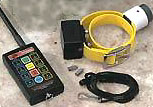Hunting Dog Names
Naming a hunting dog is a personal choice and ideally should factor in a bit of the dogs personality, family agreement, and practicality. Bear in mind that training your gun dog entails using their name frequently and repeatedly. Therefore, while an interesting name is great, one should try to keep it easy as well. Picking out the pup or training them may seem like the hardest part, but alot of people come to the realization that naming their new hunting dog may be the biggest challenge! First and foremost, if the new dog is adopted and not a puppy, it is highly recommended that one keeps the original name – there is enough work at hand without complicating training with a new name.
A few things to keep in mind when naming a hunting dog. For most people, there are two different names that will be associated with your new pup. The first is the registered name, which is often a blending of the sire and/or dam’s name or line, and one’s own personal touch. The combination of names that make up the registered name can be as grandiose and multi-syllable as one likes, and may or may not include or inspire the call name. A dog’s call name is, simply put, its everyday name. For call names, conventional wisdom supports that shorter names are better. One or two syllable names are highly preferred. Think about shouting out something like “Remington” over and over and over while training the dog, or in the field while hunting. Its going to end up being “Remi” pretty quickly. Shorter names are easier for the dog to learn and respond to as well. Whether or not the dog is going to be run in field trials can significantly influence the call name. Having a “popular” or common call name can lead to a lot of confusion during a brace. As a general rule, when selecting a call name it is good practice to eliminate any names that have more than two syllables from contention early on. Another popular practice is to have a name with some hard consonants. When combined with a one or two syllable name this makes the call name easier to shout and be heard, especially in a trial or over distance when hunting.
When naming a hunting dog, its important to come up with a name this is appealing to the owner and is one the dog will easily respond to. Many people pick a name that they later regret, either because it is hard to call, reflects an image they didn’t consider when naming, or is too common. The experienced gun dog owner will give careful consideration before settling on a name. Keep in mind that one syllable names are preferred and two syllable names can work, but hunting dog names are generally better if they are short and distinct. A gun dog’s call name needs to be a name that the owner likes, is easy to say, and one that the owner and the dog can live with many years.

